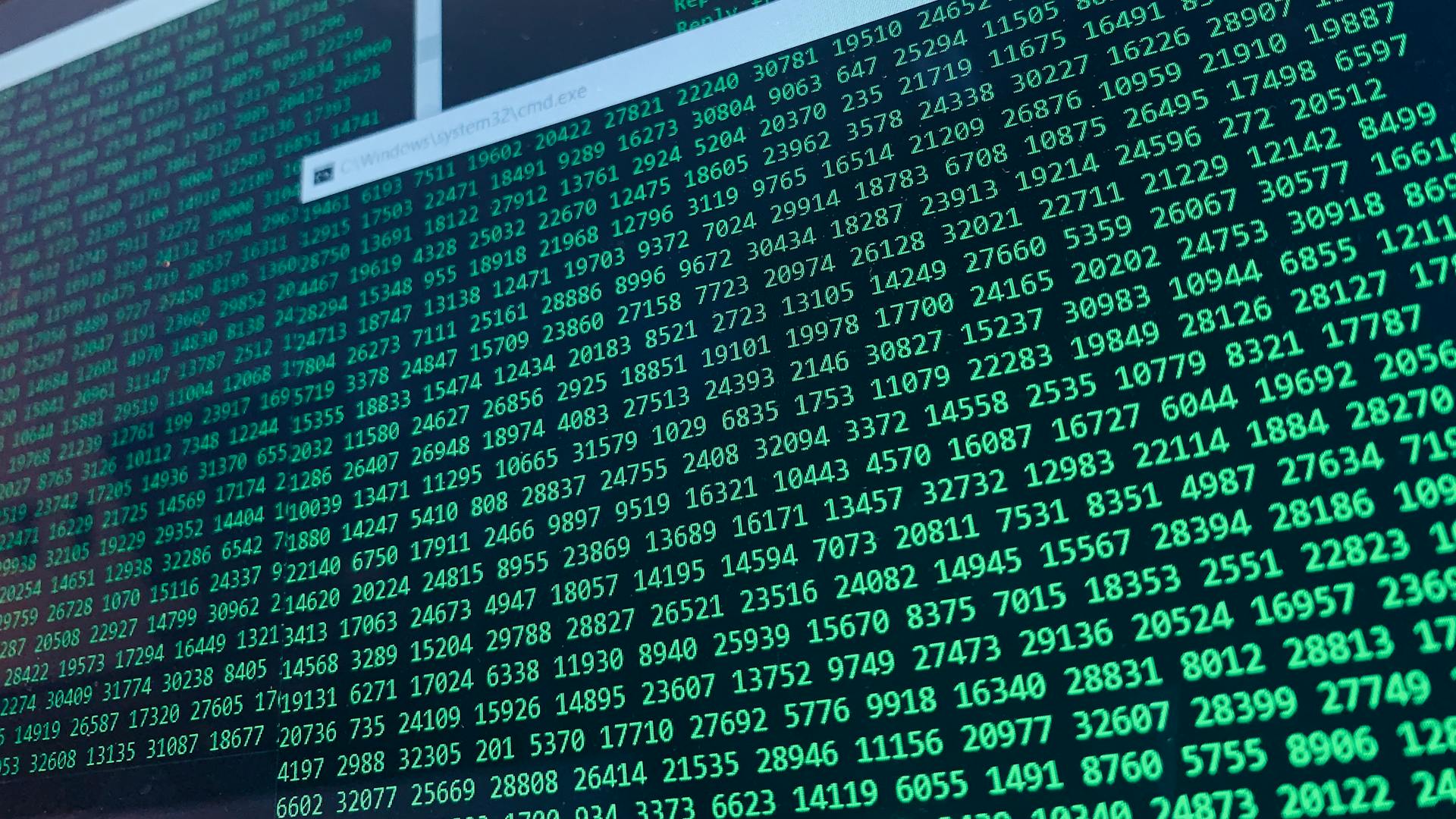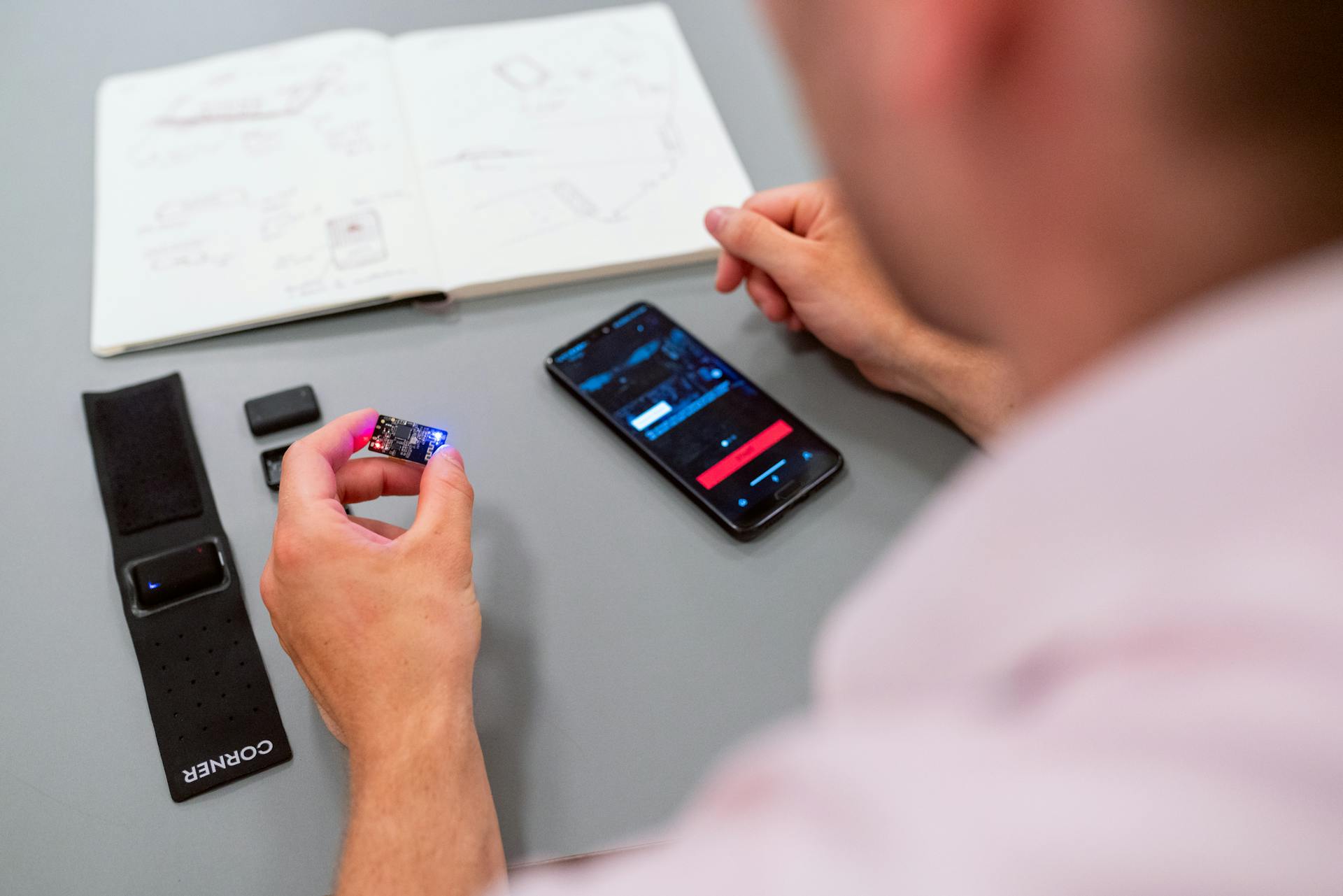
Learning Morse code can be a fun and rewarding experience, and with the right approach, you can master it in no time.
Start by learning the basic elements of Morse code, which include the dot (·) and dash (-) symbols. These symbols represent different sounds, with the dot being a short sound and the dash being a longer sound.
Practice listening to Morse code recordings to get a feel for the rhythm and timing of the code. You can find many online resources that provide audio examples of Morse code.
To learn Morse code effectively, focus on one letter or symbol at a time, and practice repeating it until you can accurately identify it.
Learning Basics
Learning Morse code can seem daunting at first, but it's actually relatively easy to learn with persistent practice. To get started, it's essential to learn the individual characters themselves, which can be done by listening to recordings or having a voice identify the letters in alphabetical order.
The key elements of learning Morse code are regularity and persistence in learning and then practising. Trying to learn too many characters at once can be overwhelming, so it's better to learn a small number each day and recap them regularly. This approach helps solidify the associations between the sounds and the letters.
One way to make learning Morse code more engaging is to practice sending and receiving messages at a realistic speed. You can start by writing your own messages and listening to them, or even download sound files to send to friends. As you become more proficient, you can learn the code for punctuation and special characters.
What Is?
Morse code is a method of communicating with a series of sounds or lights that can be understood only by someone who knows the code.
Each Morse symbol represents either a letter or number and is represented by a unique sequence of dots and dashes. The duration of a dash is three times the duration of a dot.

The SOS distress signal — three dots, three dashes, three dots — proved to be a simple way to communicate in an emergency.
To help you get started, here are the intervals of silence between Morse code elements:
- The gap between dots and dashes within a character is one dot (one unit) long.
- The gap between letters is three units long.
- The gap between words is seven units long.
Morse code is still used today by amateur radio operators, who often reserve certain bands for Morse code use.
Can I Learn?
You can start learning Morse code with a recording of the letters in alphabetical order, or by having them identified by voice in sound. This helps you associate the sound of the letter with the letter itself.
Learning a small number of letters each day is a good approach, as it prevents feeling overwhelmed. You can recap them each day to ensure they stick in your memory.
It's essential to practice regularly and persistently to learn Morse code. This will help the code become second nature.
You can use an online translator or a chart to visualize the dots and dashes on the letters of the alphabet. This visual aid can be a great help in learning.
Listening to Morse transmissions on the radio can also be a useful way to practice. Many amateur radio operators still use Morse, and you can tune in to their transmissions and try to interpret the messages.
A different take: Learn Your Name in Morse Code Day
Learning Basics

Learning Morse code can be a fun and rewarding experience, and with the right approach, you can master it in no time. The key is to be consistent and persistent in your practice.
To start, it's essential to learn the individual characters themselves, which can be done by listening to recordings of the letters in alphabetical order or having them identified by voice in sound. Numbers and other characters can be learned in a similar way.
Learning Morse code is like learning any language, and it's best to start with the basics. Begin with the numbers, as they are logical and easy to grasp. Each symbol consists of dots and dashes, also known as "dits" and "dahs", where a dash or dah lasts three times as long as a dot or dit.
To get a feel for how Morse code sounds, listen to the code and follow along with the alphabet A to Z slowly. Practice sending and receiving messages, and don't be afraid to make mistakes - it's all part of the learning process.

Here's a summary of the key elements to keep in mind:
Remember, practice makes perfect, and it's essential to practice regularly to improve your skills. Even just 10 minutes a day can make a big difference in your progress.
Learn and Practice
Learning Morse code requires regularity and persistence in learning and practicing. To start, learn the individual characters by listening to recordings or having them identified by voice. This will help you associate the sound of each letter with its corresponding symbol.
You can use a recording of the letters in alphabetical order to get started. Numbers can be learned in a similar way. Try to learn a small number of characters each day and recap them daily to avoid feeling overwhelmed.
One tip is to start by learning the Morse code numbers, as they are logical and easy to grasp. Each symbol consists of dots and dashes, also known as "dits" and "dahs." A dash or dah lasts three times as long as a dot or dit.
There are many resources available to help you learn Morse code. For example, Electronics Notes has prepared a series of videos to help you learn the code. These videos start with lessons where the code for letters and numbers is sounded out three times each with a visual indication of the character.
Here's a breakdown of the Morse code training videos available on Electronics Notes:
Remember to practice regularly, ideally at least ten minutes a day, to become proficient in Morse code. Start by following along with the alphabet A to Z slowly and then gradually increase the speed.
Equipment and Resources
To learn Morse code, you'll need some basic equipment and resources. A Morse code alphabet is a must-have, as it's the foundation of the code.
You can find Morse code recordings online or through a Morse code app, which can help you practice and learn the code more efficiently. I've found that listening to recordings can be a big help in getting the rhythm and timing right.
Worth a look: Books to Help Learn Code in Java
A notepad and pencil are also essential for taking notes and practicing the code. Write down the Morse code for each letter and practice writing it out by hand.
If you're serious about learning Morse code, you might consider getting a Ham radio set. This will allow you to practice sending and receiving Morse code in real-time.
Here are some of the key resources you'll need to get started:
- Morse code alphabet
- Morse code recordings
- Notepad and pencil
- Morse code app
- Books or audio learning course
- Ham radio set (optional)
Frequently Asked Questions
What is the fastest way to memorize Morse code?
Share your mnemonic images with others to retain Morse Code quickly and effectively. This interactive approach helps solidify the code in your memory.
What is Hello in Morse code?
Hello" in Morse code is "dit-dah-dit-dit dit-dah-dit-dit dit-dah-dit-dit dah-dit-dit". This sequence uses a combination of dots and dashes to represent each letter of the word.
Is Morse code easy to learn?
Morse code is not difficult to learn, but it does require consistent practice to become proficient. With the right method, such as the Koch or Farnsworth system, you can quickly get started.
How long does it take to learn Morse code?
The time it takes to learn Morse code varies, but consistent daily practice of 15-30 minutes is necessary to reach your goal, which can take anywhere from a month to several months. Commitment to regular practice is essential for progress.
Sources
- https://www.electronics-notes.com/articles/ham_radio/morse_code/learn-practice-tutorial.php
- https://www.qsl.net/vu2msy/learnmorse.htm
- https://www.wikihow.com/Learn-Morse-Code
- https://scoutlife.org/hobbies-projects/funstuff/575/morse-code-translator/
- https://www.thoughtco.com/how-to-learn-morse-code-4158345
Featured Images: pexels.com

